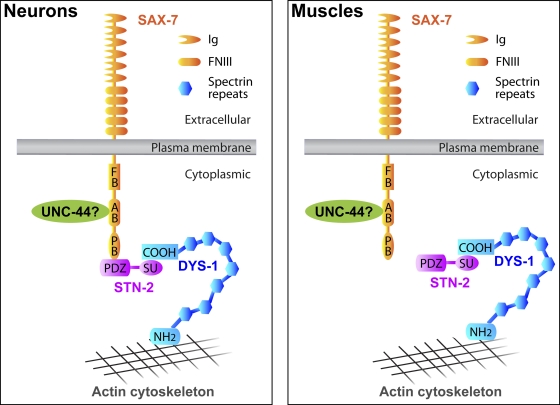Figure 8.
A model depicting how STN-2/γ-syntrophin may regulate SAX-7 activity in maintaining neuronal positions, as based on genetic and biochemical data. The model speculates that STN-2/γ-syntrophin links SAX-7 to the DYS-1/dystrophin-based actin cytoskeleton in neurons but not muscles. This interaction is dependent on the STN-2 PDZ domain to interact with the SAX-7 PB motif and requires the STN-2 syntrophin unique (SU) domain to interact with the C-terminal end of DYS-1. DYS-1 is predicted to bind to the actin cytoskeleton by its N-terminal actin-binding domain. This linkage to the actin cytoskeleton may provide SAX-7 anchorage, thereby regulating SAX-7–mediated cell adhesion. Interruption of this anchorage leads to a defect in maintaining neuronal positions. UNC-44/ankyrin also interacts molecularly and genetically with SAX-7 (Zhou et al., 2008), but it is not known whether UNC-44/ankyrin is required in neurons and/or body-wall muscles; this unknown is depicted as “UNC-44?” in the schematic. Ig, Ig-like repeats; FNIII, fibronectin type III repeats; FB, FERM-binding sequence; and AB, ankyrin-binding sequence.

